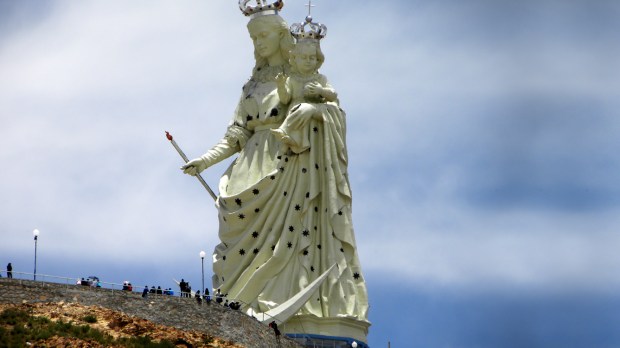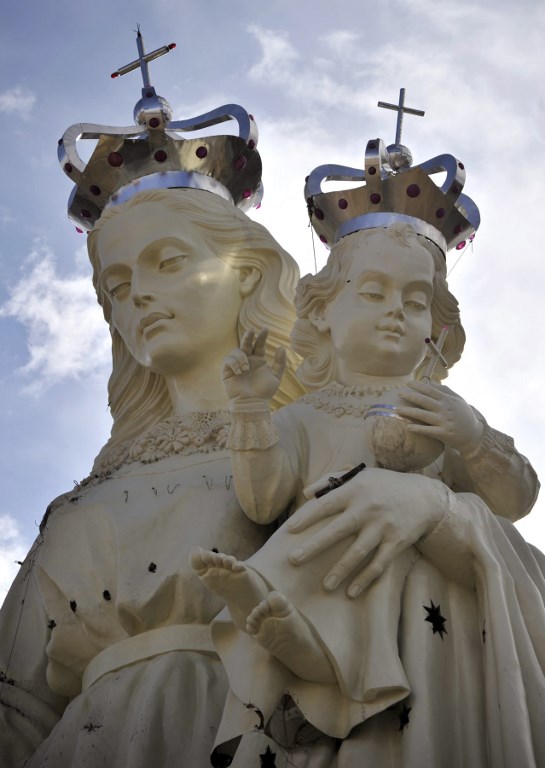At 149 feet high, the Virgin of the city of Oruro, located on a 12,000-foot mountain top south of La Paz, Bolivia, watches over the region’s inhabitants. It is 22 feet higher than Rio de Janeiro’s Christ the Redeemer statue. Known as the Virgen de la Candelaria (Virgin of the Candlemas) or Virgen del Socavón (Virgin of the Mine), it is particularly venerated by Bolivian miners who ask the mother of God that the area’s mineral wealth does not dry up.
A devotion recognized by UNESCO
A festival is held on February 2, during the Oruro carnival — the biggest cultural event of the year — in the sanctuary dedicated to the Virgin. Legend has it that in 1789, a fresco of the Virgin Mary miraculously appeared in one of the wells of Oruro’s richest silver mine. Since then, each year the costumed faithful travel five kilometers, and dancing and singing and kneel before the image of the Virgin placed in the sanctuary. This devotion is so strong that the carnival of Oruro was named to UNESCO’s Intangible Cultural Heritage of Humanity list in 2008.
A monumental statue
The affection of the people for the Virgin is such that the authorities decided to build, in 2009, a gigantic statue to reflect the size of their veneration. No fewer than 110 laborers worked on this “monument,” whose height is equal to that of a nine-story building. A moon at her feet, the Virgin holds the Child Jesus in her left hand while in her right hand, she carries a candle. The structure was designed to withstand seismic movements, and lightning conductors as well as safety lights were put in place for aircraft and helicopters.
On the ground floor of the statue of the Virgin is a chapel where the faithful can pray. While ascending the floors, visitors can admire the city through an impressive panoramic view, and this view is even more spectacular on the top floors: the 140 stars of the mantle of the Virgin, which serve as windows, offer a breathtaking view. To this day, the Virgin of Oruro remains the tallest religious monument in Latin America.


